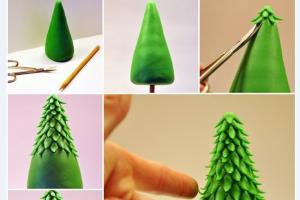To combat rodents, a lot of drugs and devices are produced: poisons with an attractive odor, spring and electric mousetraps, ultrasonic repellers. As a rule, purchasing these funds costs a pretty penny. A DIY mousetrap is practically free and does an excellent job of catching rodents.
For people who are unable to kill an animal, such traps are the only way out: most of them lure a mouse into a trap without causing it the slightest harm. Let's figure out how to make a mousetrap at home simply and without much effort.
Disposable traps
Disposable mousetraps will have to be reinstalled after each rodent caught. To make them, improvised materials (ropes, bowls, plastic bottles) and simple tools (scissors and an awl) are used.
1 option
The classic mousetrap is a slamming lid, it’s quick and easy to make. You need a small container: a 0.5-1 liter jar, a deep plate, a disposable plastic cup. You will also need a coin or a nut; the bait is tied to them on a short string. The coin is placed on the edge and the edge of the container rests on it. The mouse pulls the rope while climbing into the jar, and it falls, preventing the pest from escaping.

This elementary mousetrap from a jar can be improved: instead of a coin, you can cut out a rectangle about 2 cm wide from thick cardboard or plastic and sharpen it on one side to make it convenient to place the bait on it.
Option 2
If food spoiled by rodents is found on the table, a disposable bottle mousetrap is most convenient. To make it you will need a bottle of 1.5 liters, a rope about a meter long, an awl and strong scissors. We cut off the neck of the bottle at a distance of about 5 cm from the cork, pierce a hole at the top with an awl and tie a rope through it to the bottle. The second end of the rope needs to be secured to the table, for example, tied to the handle of a pan.
To catch a mouse in such a bottle, it is placed on the edge of the table so that the bottom with the bait hangs in the air. The mouse, having climbed inside, overhangs it, the entire structure falls down and hangs on the rope. All that remains is to drown the rodent or take it outside the house.
Option 3
The simplest mousetrap, but quite effective, is made from plastic bottle as follows: using a stationery knife, you need to cut the bottle into 2 parts at the place where it begins to narrow.
Turn the neck over and insert it into the main part, the sections must be placed at the same level and secured with tape or glued together. Bait is placed at the bottom of the bottle, the neck is lubricated with any edible oil. The mouse, once inside, slides down and cannot get out.

The only difficulty is that this plastic bottle mousetrap must be positioned so that the mouse can easily reach the neck, for example, near the shelves. You can make paths for mice to make it easier for them to climb. Then the bottles will have to be weighed down by adding some stones or sand to the bottom.
Reusable traps
Making a reusable mousetrap is not much more complicated; the designs of most of them are elementary and do not require special skills. Such traps can be checked every few days, throwing away the caught rodents. True, they cannot be left for more than a week, otherwise the room will become saturated with the smell of decomposition.
The swing principle
The design of the first reusable mousetrap, which is easy to make yourself, is based on the principle of a swing. It will require any container with a volume of 5 liters or more with a wide neck: a bucket, a saucepan, plastic containers. A rigid wire, knitting needle or wooden twig is secured across the edge of the bucket using tape.

You also need a board several centimeters wide and slightly shorter than the diameter of the bucket. For example, a ruler or a rectangle cut from thick cardboard, plastic, or metal will do.
We place this board so that it rests on the knitting needle, one edge lies on the edge of the bucket, and the other with the bait placed on it is in the air. In order for the mouse to climb onto the board, a homemade mousetrap is installed on a stool at the edge of the table. You can make a ramp from a board and attach it to the trap.
To make the trap reusable, the balancing board must be attached to the spoke and positioned in such a way that it returns to its original state on its own.
Spinning drum
The basis of this trap is the same as the previous one: a bucket and a bridge leading to it. A rotating cylinder is used to drop the rodent into the container. To make it, you can take a small plastic bottle or tin can. A small hole is made in the bottom of the bottle, and then it is placed on a knitting needle. The knitting needle is placed on the bucket as an extension of the bridge and secured.
A bucket mousetrap will work for a long time if the bait is placed around the entire circumference of the bottle. You can spread it or attach it with a rubber band. The mouse, attracted by the smell, climbs onto the drum, it turns, and the rodent ends up in the bucket. If you do not plan to release the mouse outside the house, pour water into the bottom of the bucket so that it will choke.
Trap
Mousetraps work like traps, easily letting a rodent in and preventing them from getting back out. A simple option can be made from the same plastic bottle: cut off the top and cut the edge of the main part into narrow triangles 5-7 cm long. The resulting teeth are bent inside the bottle, and the bait is placed there. The mouse easily squeezes into the trap between the elastic plastic strips, but can no longer get out.
A more complex reusable version of this design can be made yourself from wooden box. A round hole is cut out in one of its walls at a distance of no more than 5 cm from the bottom. Along its perimeter, at a distance of 1 cm from each other, steel wires 5-7 cm long are inserted so that they are inside the box. The mouse, having climbed into the hole, falls through the wires and remains inside the box. Rat traps are made in the same way, you just need to increase the diameter of the hole.
Glue trap
When catching mice, you can use special glue from rodents. It is sold in hardware stores and supermarkets in the pest control section. According to the instructions, this glue is spread on cardboard, and bait is placed in the center. A mouse, even if it gets into it with one paw, is glued tightly. This is far from a humane mousetrap; the rodent in it dies long and painfully.

The disadvantage of this product is the ability of the glue to stick to curious pets and smear everything around. You can avoid this by building reusable homemade mousetraps. In a shoe box, a hole is made on the side for the rodent, under it inside the box there is a sheet of paper with glue applied, and in the depths there is a tasty-smelling bait. After that, all that remains is to replace the paper.
Bait selection

World cinema has long convinced everyone that rodents love cheese more than anything else. In fact, catching a mouse on any dairy product is quite difficult. The most effective way to attract them to traps is to use:
- lard, especially smoked lard,
- smoked sausage,
- white bread croutons,
- unrefined sunflower oil,
- Sesame oil,
- roasted sunflower seeds and peanuts.
Bread soaked in sesame oil is most attractive to rodents.
Baits need to be changed periodically, because mice, sensing danger, stop reacting to the smell of the treat.

A mousetrap made from improvised means will not require much effort or financial expenditure, and the results from its use are often better than from industrial products. And in some cases there is nothing left to do but make a mousetrap with your own hands. It will take much less time than looking for a working store late at night or dragging yourself into town from your dacha. Having decided what materials are in the house, you can always find suitable option from a huge selection of homemade traps.
“Mouse fuss” in the apartment causes not only irritation, but also understandable anxiety. Where rodents appear, you can expect anything: from spoiled food, cereals, furniture to unpleasant and dangerous diseases among residents of houses and apartments (leptospirosis, hemorrhagic fever, plague, etc.). At the first sign of mice in your home, you need to take immediate action. The simplest of them is to catch pests. Exist special devices, which can be purchased at hardware and gardening stores. But it’s quite possible to make mouse traps yourself.
Jar and bucket trap
Notice! A home-made mousetrap will cost less without compromising on efficiency. The most uncomplicated, low-cost method that even a child can do is a trap from a jar.
- Here's one option. You will need a glass jar (1 liter), a coin, a piece of a thick branch (stick) with a length equal to the diameter of the jar. Then everything is simple. Bait is strung on a branch (meat soaked in sunflower oil is best). The branch is inserted stretched in the middle of the volume of the jar. Then the container is turned over. One edge rests on a table or floor, and the other on a coin placed edge-on. A fragile balance is maintained, which is disrupted as soon as the mouse tries to remove the bait. The jar slides off the coin and slams the “prey”.
- A cake box works on the same principle. Do not rush to throw away the container after eating the delicacy the day before. Poke a hole in the middle of the lid with a knitting needle. Insert half of the ear cleaning stick into it, and the end with the cotton should remain outside, and the broken part should stick out in the box; insert a toothpick with bait into it. Place a bar of soap or any other weight on top of the lid that can hold it closed. One edge of the lid is raised above the base of the box and rests on half of a used ear stick (its cotton end). The other is attached to the base with a stapler. The mouse will come running to the smell of the bait and try to remove it from the toothpick. At the same time, the stop falls and the lid slams shut, and the bar of soap holds it in place during the possible attempts of the rodent to get out into the wild.
- You can even benefit from a small bucket, a plastic or 200 ml aluminum can (from carbonated drinks), a round rod or a piece of metal wire when catching mice. The point is for the mouse to reach the bucket, on which a rod with a freely rotating spray can will be placed on top. The cylindrical part itself is placed above a bucket 1/3 filled with water. The bait is attached to the top of the cylinder. Pave the approaches to the bucket so that the mouse can easily reach it. Having seen the bait, he will try to get it and will fall into the rotating canister, after which he will fall into the water.
- Another working mousetrap without misfires. Everything is also a bucket, slightly filled with water, below, at the edge of the table. Above it you need to build a hanging structure from what is at hand: a notebook cover, a desk calendar made in the form of a house. If there is no calendar, then the cover of the notebook is rolled up and a pyramid is built from it - a kind of house. It should be installed on the edge of the tabletop so that half of the length is just on it, and the other hangs over the bucket. The bait is placed on the edge of the “house”. And then the mechanism is still the same: in the hope of getting food, the mouse, having thrown itself over, ends up in a bucket.

DIY trap made from a glass jar
Empty plastic containers: don’t rush to throw them away!
It’s easy to build a device for catching mice from a plastic bottle, preferably a 2-liter bottle, but a smaller volume will do. To do this, you need to cut off the upper part (to the waist) with a knife or scissors. Using a hot knitting needle or awl, make a hole just below the cut. Thread a fishing line (thin rope) into it. Its length should be such that the device hangs freely. Place a homemade bottle mousetrap in a horizontal position in the place most visited by rodents. If it's a kitchen, then on the table. Moreover, the surface of the tabletop should be smooth.
Interesting! The bait is placed in the bottle near the very bottom. The container is placed on its side, with the bottom part hanging over the tabletop, and the main part, with the neck cut off, is on the table. The second end of a fishing line or string is tied, for example, to a heating pipe, flower pot, etc. All you have to do is wait until the mouse, sensing the smell of the bait, climbs into the container. The bottle will tip over under the weight of the rodent and hang on the fishing line.

Plastic bottle trap - primitive, but it works
- You can use a 1.5 liter plastic container in another way. Cut off the top part with the cork and a small margin. It's already waste material. Next in the work will be the resulting vessel. In it, the upper edge is cut into triangular teeth 5-7 cm long. Place the bait on the bottom of the cut bottle. The cut teeth are folded inwards to fit against the inner surface walls Remaining round hole It will be just the right size for a rodent to crawl into. A homemade mousetrap is laid horizontally. Once inside, the mouse will not be able to get out due to the resistance of the sharp teeth.
- If there is no “plastic” at hand, we make a mousetrap from a Champagne bottle. Pour a little toasted oil into it (30 ml is enough), and distribute it by shaking throughout the bottle. Be sure to apply oil to the inside of the neck with your finger. The neck of the bottle is placed on a brick or piece of cinder block. The bottom under the stop is on the ground or other surface much lower. To prevent the container from falling, supports are made from the same pieces of bricks. The mouse will definitely be attracted by the smell of oil, and it will “dive” into the “Champagne”, and the slippery oily walls will not allow it to get back out.
- You can make a design from an empty tin can with the lid not completely cut off. On its wall, at a height of 10 mm from the base, draw a circle with a felt-tip pen. Diameter – 20 mm or other. To do this, use a coin. Pierce the jar in the center of the circle with a knife. From this hole, use scissors to cut pointed wedges, expanding from the center to the outlined border of the circle. Using pliers or tweezers, bend the sharp rays into the middle of the jar. The outside should be smooth. Place bait inside at the bottom. Bend the lid to starting position, covering the jar. Place it in a place where mice crawl. Curious animals will definitely want to check the contents of the mousetrap and crawl into it. The “bristling” teeth will prevent them from getting back out.
Glue trap

Everything ingenious is simple: cardboard + glue + bait
It’s easy to make a mouse trap from a sheet of cardboard, plastic (the size of a notebook page), or a special adhesive with increased fixation designed for catching rodents and insects. To do this, cut out a cardboard base. Glue is applied to it in special tracks 2-3 cm wide with 4 cm gaps between stripes. Pieces of bait are laid out in these places.
Advantages of a homemade device
Mousetrap design self-made has a number of advantages:
- always found on the farm consumables, which can be adapted for this purpose;
- possibility of choosing a design;
- development of creativity in the approach to making a mousetrap;
- economical design: in case of breakdown, you can always make another model from the same available materials.

The existence of a mouse on the balcony of the 10th floor in the cereal cabinet, although rare, is still possible. The reasons for the appearance of a rodent indoors can be very different. Let's take a closer look at them.
Often we ourselves provoke rodents to visit, forgetting about maintaining cleanliness and order. local area and leaving food in accessible places. In addition, with the onset of cold weather, rodents look for places to winter.
In city conditions, mice settle in basements, but they do not contain food and, in addition, they are often visited by cats. That is why rodents begin to colonize nearby apartments.  Of course, one mouse may seem quite funny, but you need to remember that rodents multiply very quickly, and the presence of several mice in an apartment can turn into a big problem.
Of course, one mouse may seem quite funny, but you need to remember that rodents multiply very quickly, and the presence of several mice in an apartment can turn into a big problem.
Did you know? Thanks to its movable, flexible body, the mouse can pass through gaps 3 times smaller in diameter.
There are several classic methods of catching mice that are no longer relevant.
The main one is the cat. True, today's domestic cat, eating balanced food, is unlikely to catch mice. Her interest in the rodent will be no more than in an ordinary interesting toy.  The second method is to install a mousetrap. Many people find this method inhumane towards the rodent.
The second method is to install a mousetrap. Many people find this method inhumane towards the rodent.
One mouse is not capable of eating enough to awaken bloodthirstiness in its owners, but it can significantly spoil food and nerves.
That's why we look for humane ways to remove mice from our property. To do this, you just need to catch the small dirty fish and return it to its natural habitat.
If your goal is to catch the mouse so that it remains safe and sound, then it is better to use homemade designs. Their purpose is to prevent a captured rodent from escaping from the trap. To make it easier to fall into the trap, additional boards-stands are used.
Bait is placed inside the trap. It can be attached inside or just be in it. Mice are omnivores. They love cereals, seeds, sausage, and meat.  An example of a homemade mousetrap The main thing is that the bait must have a strong odor. This is what the rodent catches first.
An example of a homemade mousetrap The main thing is that the bait must have a strong odor. This is what the rodent catches first.
Typically, traps are placed in places where rodents move - near the walls of the room.
Did you know? Rodents exhibit the phenomenon of collective intelligence. Using ultrasonic communication, they transmit information to each other about food sources, traps, and new habitats. Therefore, new mechanical traps remain effective for only one month.
For this trap you will need the following materials:
- bucket;
- a board along which the mouse can get to the bait;
- a paper lid on a thick cardboard bucket;
- wire to secure the lid to the bucket;
- mouse food.
For the trap you will need to make it out of an ordinary one. thick paper a lid that can be attached to the bucket.
In the center of the lid you need to make a small cross-shaped cut, pour seeds or other food there.
Place a board next to the bucket, which will help the rodent get to the food.
The principle of the trap is that, under the weight of the mouse, the paper will bend at the cut site, and the rodent will fall into the bucket. 
Bucket and bottle (can)
For this trap you will need:
- plastic bucket;
- two cans from any drinks (0.33 l);
- a knitting needle or a piece of thick wire on which the jars will be placed;
- a board along which the mouse will get to the bait;
- food for rodent.
- We take two drink cans and punch holes in the bottom. We drill holes in opposite sides at the neck of the bucket.
- We take a wire that can be inserted into the holes in the bucket and secured. We string two cans onto a wire through the holes in the bottom and lid.
- Both cans form a monolithic structure, at first glance, but in fact they easily rotate around a wire axis.
- We insert the wire into the bucket and secure its ends. We place bait at the neck of the cans.
- If you secure it with tape, you can catch several rodents during the night.
- We install a springboard next to the bucket so that it is convenient for the mice to get close to the bait. Rodents can climb many surfaces, but varnished tin cans are too slippery for them. Therefore, stepping on the can will cause it to rotate around its axis, causing the mouse to fall into the bucket.
Video: trap made of cans and buckets If rodents are getting out of the bucket, pour a small amount of water into the bottom. This won't kill the mouse, but it will prevent it from getting out.
Important! Do not catch rodents in the presence of children. This can cause them psychological trauma.
The materials for the trap are as follows:
- can with a volume of 0.5 l or 0.75 l;
- a piece of cardboard;
- wire;
- coin with a face value of 5 kopecks;
- a piece of odorous food for bait (sausage, lard or something else);
- scotch.
The bait must be secured with tape to inside jars so that you have to reach for it. Secure the jar with wire to a piece of cardboard with the neck down. It must be secured in such a way that the mouse cannot turn the jar over. The neck of the jar needs to be lifted above the cardboard using a coin. If a rodent gets inside, the coin should fall and the neck of the jar should fall onto the cardboard. 
Plastic bottle (1 method)
To make this trap you will need:
- wooden beam for fastening the structure;
- a small wooden board for constipation;
- plastic bottle;
- anchor;
- bait.
Drilling with a screwdriver through hole in a plank that will be the base of the structure.
- We drill a through hole in the center of the bottles so that the bottom and neck can easily change position.
- We anchor the bottle to the board so that the top point of the neck is at 40-45 degrees. We install a locking board at the neck of the bottle so that the neck rises above the board.
- When the neck of the bottle moves under the weight of the mouse, it should rest against the locking board, which will block the exit from the trap.
- We fasten the structure against the wall, since mice most often move along the walls of the room, and put bait inside. Having discovered the source of the smell, the mouse will go into the neck of the bottle for food - it will rise up, and the bottom with the rodent will go down.
- If the rodent tries to get out of the bottle, then the neck that goes down rests against the locking board, and the mouse remains locked in the trap.
Video: mouse trap made from a plastic bottle
Plastic bottle (2nd method)
For such a trap you need to take:
- a plastic bottle for any drink;
- wooden block- stand;
- additional board;
- vegetable oil;
- food for rodents.
- The wooden block should ensure that the bottle is placed at an angle of 40-45 degrees. We take a wooden block and fix the bottle on it using a self-tapping screw so that the neck is at the angle we need.
- Pour a little oil into the bottle and add a small amount of food. It should attract the animal with an intense smell.
- We place the trap on the floor in the place where the mouse is most likely to appear.
- We bring a springboard board to the neck of the bottle. The trap is ready.
- Once in the bottle, the mouse will get dirty in vegetable oil and slippery paws will not allow her to get out.
Video: how to make a mouse trap from a plastic bottle
Did you know?Large front teeth grow in a rodent throughout its life. Over the course of a year, they grow several centimeters. Therefore, the mouse is able to chew through almost any material, including concrete and metal.
Required materials for this method:
- bucket;
- board-lift;
- knitting needle or piece of thick wire;
- paper perch (a strip of thick cardboard 4-5 cm wide);
- bait.
- We attach a knitting needle or wire to the bucket so that it crosses the neck of the bucket.
- We substitute a board along which the rodent will climb to the bait perpendicular to the fixed knitting needle.
- We place a strip of thick cardboard paper on the board so that it rests on the board and the knitting needle. The trap is ready.
- When the mouse gets close to the treat, under its weight the perch will fall into the bucket along with the mouse.

Important! If you call a rodent extermination service, remember that most of the drugs used are dangerous not only for mice, but also for pets. Protect your animals from possible contact with toxic substances.
If humane ways to get rid of mice are not successful, then you will still have to set up a mousetrap or call in specialists. This may be especially true for private houses and summer cottages.
So, being the owner of a private house (in which I live only in the summer) and a house on summer cottage(which I rarely visit), I ran into one problem: MICE! In the summer this is not so bad, but with the onset of cold weather, the problem becomes urgent - mice tend to warm up and climb into houses. Of course, there are a great variety of mousetraps sold in stores. And I bought and installed them. But they have one common drawback - they catch the same mouse! What if I don’t show up at the house every month? How many mousetraps can I install? ... You can, of course, a lot! But then, you will definitely accidentally get into them yourself! After all, they are placed in “secluded places”, or a cat or a dog will do it!
So I did homemade mousetrap(and more than one), which has the following properties: it can catch several mice, and it is absolutely safe for everyone who is not a rodent, and does not fit into a two-centimeter hole.)))
Today I made another such mousetrap and photographed the process. I made it for six mice, so we will consider this option.
So, we will need:
1) Bar. (Any unnecessary one will do. Section from 40 to 100 mm, to infinity... Well, within reasonable limits. I don’t recommend making it from sleepers))))) Length - about 6 centimeters for each “mouse space” - in my case - about forty centimeters)
2) Old bicycle spokes. (Again, one for each mouse - in my case - 6)
3) Thin knitting wire (I took 0.8)
4) Strong thread.
To begin with, we drill “blind” holes at the end of our beam, with a diameter of 20 mm and a depth of 8-10 cm. (The beam should be two centimeters wider). (These will be “holes” for mice). I did it with the help of an adjustable feather drill woodworking and conventional drill.

After this, we need to make a cut along the entire block, stepping back about a centimeter from the edge where we drilled the blind holes. The depth of the cut should reach the bottom edge of our holes. I did it using a wood wheel and a 125 small angle grinder. It can be done with a circular saw (circular saw), or even hand hacksaw. But in this case, you will not be able to make a mousetrap for more than 3 holes - the length of the hacksaw blade will not be enough.

The next step is at a distance of about two to two and a half centimeters from our cut, drill two holes across the beam, 2 mm in diameter. They must pass across each hole, dividing it into equal parts. For clarity, I inserted in drilled holes wire:

Using the same drill, we drill a hole in the block where the burrow has already ended. We get this product:



Let's start assembling. We insert the springs into the hole we drilled opposite each hole:

After this, we attach a loop of knitting wire to the end of each spring:

And we charge the mousetrap: Compressing the spring so that the wire loop drops into our cut, we fix it by inserting something of a suitable diameter. I used the same file:

After this, we simply tie the spring with a thread passed through our two holes. I use a gypsy needle to make it easier to thread:

After this, we remove the file and place the bait in the end of the hole. Better, strong smelling. I used pieces of lard skin that had been fried to a crisp. (This can be done at the beginning. It’s even more convenient - the threads don’t get in the way)
We charge all the minks in a similar way:

What we have: a wire loop, which is larger in diameter than the mink, is completely hidden in the cut and does not block the mink. A mouse, seeing a hole, will naturally try to explore it. Moreover, it smells delicious! Having passed through the loop, she will run into threads blocking her passage... and simply gnaw them off!! (Don’t doubt it, it’s been verified.) The rest is clear. The released spring will immediately jerk the wire loop upward... That's it!!! Not a single one has reached the bait yet))))) At the same time, the mouse’s tail sticking out of the mink does not scare away others! The rest of the minks are free! Upon arrival at the dacha, I sometimes shake out, pressing the springs, 10 mice each! All you need is a new thread. The bait lasts a long time.
Mice are humanity's oldest neighbors. Rodents are to blame for many epidemics, as they are capable of carrying deadly diseases. Modern medicine has come a long way, but some illnesses can still seriously harm a person. The appearance of mice in the house is a real misfortune. Pests must be dealt with immediately.
It is not necessary to kill the rodent; there are many humane ways, which will help catch the pest and release it to a safe distance from your home. You can make clever traps at home. They are safe for pets and small children, but are highly effective.
Reasons for the appearance of mice in the house

Despite their outer shell, mice are quite smart animals. They get into small cracks, run through sewers, ventilation pipes, are able to run into an open window or door. Some individuals bypass intricate traps without problems, sometimes survive persecution, and even develop immunity to frequently used poisons. To successfully catch gray pests, be smart and patient.
Human habitation includes several important aspects necessary for reproduction and normal functioning of pests:
It is very easy to suspect the presence of mice in the house; it is enough to note some aspects:
- chewed bags of cereals;
- the presence of rodent feces on the floor, near accumulations of food;
- unpleasant odor;
- At night, rustling, noise, and squeaking noises appear. During the day, rodents hide in secluded places, so their presence is little noticeable.
Having found roommates, start exterminating them immediately. To do this, use time-tested traps and folk remedies. It is not necessary to spend money on expensive poisons that can have a detrimental effect on the health of humans, pets, and even indoor plants.
Damage caused by gray rodents

Rodent danger:
Homemade homemade traps: how to make and use
This opinion is absolutely wrong. Rodents prefer pieces of sausage, bread, and grain, which are sprinkled with sunflower oil. Seeds are extremely popular among gray pests; you are sure to make a big catch with this product. Modern mousetraps are compact, lightweight, but have a significant drawback - the mouse suffers before death, which is not very humane. Also, the trap is designed for only one animal; it will not be possible to catch another animal.
Note! Homemade mouse traps are absolutely safe; a caught animal can be released and the product can be used many times. In addition, traps made at home are made from scrap materials; there is no need to spend money on their production.
Catching a rodent using a jar

Usage options:
- option number 1. You will need a bucket or any other large container, a plastic bottle (0.5), wooden stick, bait. Insert a stick into the bottle so that it penetrates the bottom and neck of the product. Place the bottle so that the ends of the stick are secured to the edges of the bucket. Place bait on the top of the bottle. The mouse will try to eat it, stepping on the bottle, it will spin, the rodent will remain in the bucket;
- method No. 2. Place a bucket under the stool and place a piece of light wood in the form of a strip on it. Place the product in the form of a springboard, and place a tidbit on the edge above the bucket. The wooden plate will not be able to withstand the weight of the bait and the rodent; it will fall down into the bucket, and the rodent itself will be trapped with it.
Pest control glue
Hardware stores sell special types of glue designed to catch rodents. Distribute the product over flat surface, the mouse will get stuck in it while examining the glue and will no longer be able to get out. A glue trap for mice is not suitable if there are small children or pets in the house.
Plastic bottle

Effective recipes folk remedies from cockroaches in the apartment are described on the page.
Go to the address and learn how to deal with midges in the kitchen.
Helpful Tips:
- store all cereals and sugar in glass containers with a tight-fitting lid. Regularly inspect your supplies; the presence of strange objects, small black lumps is a sure sign of the presence of living creatures in the house;
- Remove plastic bags from the kitchen. All products stored in them are potential food for rodents;
- place a few cloves of garlic in the kitchen cabinets, bay leaf or onion skins. Specific scents will repel mice;
- garbage cans should be placed as far as possible from a residential building. Empty the trash can regularly;
- Hang a birdhouse near your house and attract birds of prey with crumbs. For example, one barn owl can catch up to seven rodents per night;
- Wash all surfaces with a solution of water and chlorine (take a tablespoon of powder per liter of liquid). The strong aroma will scare away uninvited guests;
- Mice don't like space and lack of clutter. Keep your apartment or private house clean and tidy, remove all secluded places. This will make your home unsuitable for rodents.
Mice are smart animals, capable of multiplying quickly and causing mischief to humans. They will help you deal with uninvited guests homemade traps. Follow the instructions for their manufacture, adhere to preventive measures.
From the following video you can learn how to make a mouse trap with your own hands in a few minutes:
Attention! Only today!








